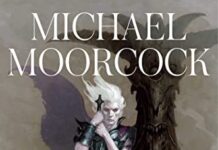In a world where conventional perspectives on romance frequently enough fall flat, “The Kiss Quotient” emerges as a refreshing exploration of love’s intricacies, skillfully marrying intellect with emotion. Helen Hoang’s debut novel invites readers to delve into the lives of its unique protagonists, presenting a narrative that intertwines the struggles of neurodiversity with the quest for genuine connection. as we embark on this review, we will unravel the layers of Hoang’s story, assessing how it navigates the delicate balance between logic and the unpredictability of love. Prepare for an insightful journey through the pages that challenge societal norms and redefine what it means to truly embrace one’s heart.
A Fresh Take on Romance: The Unique Premise of The Kiss Quotient
The Kiss Quotient breaks away from traditional romance narratives by weaving together the complexities of love and the nuances of neurodiversity. At the heart of this refreshing story is Stella Lane, a accomplished woman with Asperger’s syndrome who believes that relationships can be approached with the same precision and logic as her career. To fill the gap in her romantic life, she devises a unique plan: hire an escort, Michael, to teach her the intricacies of physical intimacy and emotional connection. This unexpected partnership fosters an engaging exploration of how love can blossom through seemingly unorthodox means. The narrative cleverly defies conventional romantic tropes and celebrates the beauty of human connection in all its forms.
As Stella and Michael embark on this unconventional journey, they encounter both personal growth and the challenges that come with vulnerability. The chemistry between them serves as a testament to the idea that love isn’t merely a series of predictable events; it’s an evolving dance of emotions, logic, and discovery. Themes of acceptance, identity, and the importance of communication are intricately woven throughout their relationship, making the story both relatable and profound. Readers are treated to a nuanced portrayal of love that embraces diversity and redefines what it means to truly connect with another person.
The Art of Representation: Diverse Characters in a Contemporary Love Story
In “The Kiss Quotient,” diverse characters take center stage, weaving a tapestry of experiences that enrich the narrative. The protagonist, Stella Lane, is a successful woman on the autism spectrum, providing a fresh outlook on love and relationships. Through her journey, readers encounter a myriad of cultures and backgrounds, illustrating that romance is not confined to a singular experience. This representation not only fosters relatability but also ignites conversations about the intricacies of identity and belonging. key highlights of Stella’s world include:
- Realistic portrayals of neurodiversity
- Cultural nuances enhancing character depth
- Varied familial structures influencing romantic dynamics
The male lead, Michael, adds layers to the romantic narrative, inviting a dialog about masculinity and vulnerability. His character breaks stereotypes, showcasing the emotional complexity that ofen gets overshadowed in typical love stories. By placing these two unique characters in tandem, the novel deftly navigates themes such as:
| Theme | Significance |
|---|---|
| Love and Acceptance | Emphasizes the importance of self-love and mutual understanding |
| Breaking Stereotypes | Challenges conventional notions of romance and relationships |
| Empathy and Growth | Shows how love can inspire personal growth |
Navigating Neurodiversity: Understanding Stella’s Journey Through Relationships
Stella’s journey through relationships is a vivid tapestry woven with the threads of her neurodiversity, revealing the challenges and rewards of forming connections.As she navigates the intricacies of love, it becomes evident that her unique perspective shapes not only how she interacts with others but also her understanding of intimacy. Within the pages of The Kiss Quotient,readers witness Stella’s evolution,characterized by moments of both vulnerability and strength. Her experiences echo the truth that love frequently enough demands a delicate balance of logic and emotion,a theme that resonates deeply throughout the narrative.
To truly grasp Stella’s relationships,it’s crucial to consider the important factors that influence her interactions. These factors often resemble the following:
- heightened sensitivity: Stella experiences emotions more intensely,affecting her responses.
- Analytical thinking: Logic plays a pivotal role in her decision-making, sometimes at odds with romantic expectations.
- Communication style: Directness and clarity are paramount for Stella, which may cause misunderstandings.
In the Kiss Quotient, these elements are beautifully illustrated through her connection with michael, who serves as both a catalyst for her growth and a mirror reflecting her inner complexities. This relationship becomes a testament to the fact that love can thrive even in the most unconventional circumstances, pushing boundaries and redefining norms as Stella learns to embrace herself and those around her.
The Chemistry Factor: Analyzing Romantic Tension in The Kiss Quotient
In “The Kiss Quotient,” the interplay of characters offers a profound exploration of romantic chemistry that transcends mere attraction. The protagonist, Stella, navigates her Asperger’s diagnosis while embarking on a unique journey to understand intimacy through a calculated, logical lens. This scientific approach leads to an intriguing paradox: the more she attempts to quantify love through methods and formulas,the more she finds herself entangled in the unpredictable realm of emotions. The vibrant connection between Stella and Michael, her contract hire, evolves organically, showcasing how vulnerability and genuine interaction can defy analytical boundaries.
the novel artfully presents romantic tension not just as physical attraction but as a deeply woven tapestry of shared experiences and emotional resonance. Key elements contributing to this palpable chemistry can be summarized as follows:
- Character Depth: Both Stella and Michael are multifaceted, bringing their own baggage and histories to the relationship.
- Growth and Vulnerability: Their interactions push them out of their comfort zones, leading to personal growth.
- Realistic Challenges: The story deftly portrays real-life issues such as insecurities and misunderstandings that heighten romantic tension.
- Intimacy Beyond Physicality: The emotional connection builds as they learn to communicate openly and honestly, fostering a deeper bond.
Beyond Passion: Emotional Depth and Vulnerability in Love
in “The Kiss Quotient,” the intricate dance between emotional depth and vulnerability encapsulates the essence of human connection. As the protagonist navigates her relationship with a charming escort,the narrative beautifully illustrates how love often transcends mere passion. The story deftly portrays the characters’ struggles with vulnerability, unveiling how their true selves emerge only when they confront their insecurities. This exploration is not just a romantic trope; it serves as a poignant reminder that embracing one’s flaws can lead to authentic connections. The emotional turmoil experienced by the characters adds a rich layer to the plot,making it clear that love is more than just a spark—it’s about understanding and accepting one another in their entirety.
Their journey highlights key themes that resonate with readers, fostering reflections on their own experiences with love.Consider the following aspects that make their story compelling:
- intimacy through Vulnerability: The layers of intimacy that blossom when characters share their fears and dreams.
- Growth and Healing: Each encounter becomes a step toward self-discovery and emotional healing.
- Realistic Challenges: The honest portrayal of life’s complexities adds depth and relatability to their relationship.
By weaving these elements into the fabric of the narrative, the author invites readers to reflect on their own emotional landscapes, reinforcing that real love flourishes at the intersection of vulnerability and passionate connection.
The role of Logic: How Analytical Thinking Shapes Romantic Decisions
In “The Kiss Quotient,” the protagonist, Stella Lane, navigates the complexities of modern romance with a surprisingly analytical approach. She embodies the belief that love can be quantified and optimized, much like her professional life in the tech industry. By utilizing logical frameworks to assess compatibility and emotional connections, Stella challenges the notion that romantic decisions should be solely driven by emotion. Rather, she highlights how a methodical perspective can facilitate a deeper understanding of oneself and one’s partner, thus paving the way for meaningful relationships. This innovative blend of heart and head underscores the power of analytical thinking in forging authentic connections.
Moreover, the narrative illustrates specific moments where analytical reasoning leads to revelations about intimacy, vulnerability, and desire. stella employs practical tools, such as spreadsheet comparisons and calculated interactions, to explore her feelings. This use of data-driven decision-making can be seen as both a strength and limitation.While it offers clarity, it may also constrain the organic, fluid nature of love. Readers might find themselves contemplating the balance between reason and emotion when pursuing their romantic interests.Ultimately, the book invites an exploration into how logic, while a valuable companion in romance, must coexist with passion to create a holistic approach to love.
Plot Twists and Turns: Engaging Narrative Developments Throughout the Journey
At first glance,”The Kiss Quotient” may appear to follow a predictable romantic trajectory,yet it skillfully weaves in unexpected developments that refresh the narrative.The initial premise, revolving around Stella’s unique approach to finding love through a contractual arrangement with Michael, sets the stage for a series of unanticipated twists. Readers are gradually drawn into the intricacies of their relationship,where emotional depth and vulnerability become pivotal elements,changing the dynamics between the characters in ways that challenge their preconceived notions of intimacy. Each chapter reveals layers of complexity that provoke thought and elicit empathy, reminding us that love is rarely straightforward.
The story takes several surprising turns when characters confront their pasts,revealing profound insecurities and longstanding fears. Moments that seem trivial often morph into significant revelations, reinforcing the theme that personal growth is a journey riddled with setbacks and breakthroughs. The interactions between Stella and Michael are especially poignant as they navigate societal expectations and their emotional barriers. Notably, the evolution of their relationship showcases how they both learn crucial life lessons that resonate, illustrating that love can defy logic while remaining deeply human. The plot never allows for complacency; just when readers think they understand the characters’ motives, new developments reshape the narrative landscape.
The Power of Consent: Healthy Relationships as Central Themes
At the heart of healthy relationships lies the essential concept of consent, a theme that resonates deeply throughout “The kiss Quotient.” the protagonist, Stella, confronts her own boundaries and desires as she navigates a structured, logically driven approach to romance. This is not merely a storyline of attraction; rather, it delves into decision-making processes where both parties openly communicate their needs and expectations. The narrative highlights how engagement in a relationship should be grounded in mutual respect and understanding. Through the explicit negotiation of consent, Stella exemplifies the importance of prioritizing comfort and safety in intimate moments.
The novel shines a light on the delicate balance of emotional and physical connections, emphasizing that consent isn’t just a one-time conversation. It evolves as partners explore their dynamics together. Some key aspects depicted in the book include:
- Open Communication: The characters consistently express their feelings and boundaries.
- Empathy: Each character strives to understand the other’s perspective, fostering a safe space.
- Continuous Affirmation: Consent is revisited and reestablished, illustrating its fluid nature.
Ultimately, “The Kiss Quotient” serves as a compelling reminder that healthy relationships thrive on ongoing dialogue, where both individuals can freely express their desires and respect each other’s autonomy.The portrayal of consent not only enhances the characters’ romantic journey but also offers readers valuable insights into cultivating meaningful connections grounded in trust.
Recommendation for Heartfelt Reads: What to Explore post-The Kiss Quotient
For those looking to further explore the themes of neurodiversity and love, “The Rosie Project” by Graeme Simsion artfully mixes humor and romance through the lens of an awkward yet endearing protagonist. Meanwhile, “Beach Read” by emily Henry takes a different approach, crafting a story about two writers with contrasting styles who challenge each other to grow in unexpected ways. To help you decide which book to pick next, here’s a quick comparison:
| Title | Author | Key Theme |
|---|---|---|
| Red, White & Royal Blue | Casey McQuiston | Political Romance |
| The Hating Game | Sally Thorne | Enemies to Lovers |
| The Rosie Project | Graeme Simsion | Neurodiversity & Love |
| Beach read | Emily Henry | Personal Growth & Romance |
Pacing and Timing: How Narrative Flow Enhances the Reading Experience
In “the Kiss Quotient,” the pacing is meticulously crafted, allowing readers to immerse themselves in the evolving relationship between the protagonists, Stella and Michael. The balance between intimate moments and the challenges they face keeps the narrative flowing seamlessly. Key scenes unfold at just the right tempo, enabling readers to savor the emotional beats while also feeling the urgency of their circumstances. This rhythmic cadence enhances the overall reading experience and invites readers to reflect on the complexities of love, making it both an engaging and thought-provoking journey.
The timing of each plot twist and character development is equally crucial. Critical moments are often juxtaposed against more lighthearted exchanges, providing a contrast that adds depth to the narrative. This technique serves to highlight the characters’ growth and the theme of vulnerability in relationships. Here’s a brief illustration of how the story balances emotional depth and humor:
| Scene Type | Example |
|---|---|
| Emotional Depth | Stella’s realization of her feelings for michael during a quiet moment. |
| Humorous Exchange | Michael’s witty banter while teaching Stella about intimacy. |
stylistic Choices: The Impact of Language and Dialogue in the Story
The language and dialogue in The Kiss Quotient serve as a vital conduit for expressing the intricacies of human relationships and emotional depth. Author Helen Hoang employs a blend of sharp wit and heartfelt vulnerability, which not only brings the characters to life but also invites readers into their intimate world.The use of dialogue is particularly compelling,as it oscillates between lighter,humorous exchanges and profound conversations that reveal their innermost fears and desires. This duality enhances the character development, allowing the audience to witness their evolution through every flirtatious quip and earnest confession.
Moreover, the stylistic choices in language reflect the contrasting backgrounds of the protagonists, contributing to a rich tapestry of cultural identity and personal experiences. Each character’s dialogue is infused with distinctive traits that reveal their unique perspectives on love and relationships.This attention to detail fosters a connection between the reader and the characters, making their journeys relatable. For instance,the careful juxtaposition of technical jargon with tender affirmations emphasizes the protagonists’ struggles to balance logic and emotion in their quest for love. Such choices ultimately enrich the narrative, transforming it into a thoughtful exploration of the complexities of connection.
Visual Imagery and Atmosphere: Creating a Believable World for Romance
In “The Kiss Quotient,” the author masterfully constructs a rich tapestry of visual imagery that invites readers into a vibrant world where love blossoms amidst the complexities of life. The settings are crafted with meticulous detail, from the bustling streets of San Francisco to the intimate corners of a cozy apartment, evoking a sense of place that feels both familiar and enchanting. Key elements such as:
- Warm, golden hues of sunset that reflect the warmth of budding romance
- Dynamic cityscapes that mirror the characters’ evolving relationships
- Intricately described fashion choices that symbolize personal growth and self-acceptance
These elements work in harmony to establish an atmosphere that enhances the narrative. The protagonist’s journey is vividly illustrated through symbols like the Kiss Quotient itself, which serves as a visual metaphor for the emotional and physical intimacy sought throughout the story. Furthermore, ancillary characters contribute to this world by enriching the environment with their unique quirks and personalities, creating a diverse backdrop against which the main love story unfolds.
| Elements of Imagery | Impact on Atmosphere |
|---|---|
| Colors | Creates emotional resonance |
| Textures | Enhances tactile experience |
| Contrast | Emphasizes character development |
Cultural Context: How Background Influences Character Dynamics
In “the Kiss Quotient,” the cultural backgrounds of the characters considerably shape their interactions and emotional journeys. The protagonist,Stella lane,grapples with her Asperger’s diagnosis,which influences her understanding of relationships and intimacy. This cerebral approach to love contrasts starkly with the more intuitive demeanor of Michael, her love interest. Their diverse backgrounds lead to a complex dynamic that is enriched by moments of vulnerability, creating a tapestry where cultural nuances resonate through their encounters. In particular,elements such as social expectations,familial pressures,and personal aspirations manifest in their behaviors and conflicts,illustrating how different backgrounds can either clash or harmonize in the pursuit of love.
moreover, the novel does an extraordinary job of depicting the intersectionality of culture, identity, and emotional expression. Stella’s upbringing as a successful, aspiring woman contrasts sharply with Michael’s experiences as a struggling escort navigating societal judgment. This dichotomy reveals how their cultural contexts not only affect their relationship but also alter their perspectives on love and companionship. The story serves as a reminder that the intersections of identity—such as economic status, personal experiences, and emotional needs—are crucial in shaping relational dynamics.Readers are invited to reflect on how these factors influence their connections, making the exploration of love not just a tale of romance, but a deeper commentary on the human condition.
Meet Helen Hoang: The Visionary Author Behind The Kiss Quotient
In Retrospect
“the Kiss quotient” invites readers to explore the intricate dance between love and logic through its compelling characters and innovative narrative. As we navigate the complexities of societal expectations and personal desires alongside Stella and Michael, we are reminded of love’s multifaceted nature and the ways in which it can challenge our perceptions. The novel deftly balances heartwarming moments with thoughtful insights into human connection, making it a worthwhile read for anyone intrigued by the intersection of emotion and reason. Whether you approach the story with a heart full of hope or a mind grounded in reality, “The Kiss Quotient” offers an engaging exploration that resonates long after the final page is turned. So,if you haven’t yet embarked on this journey,perhaps now is the perfect time to dive into a world where love is both a science to be studied and an art to be embraced.


















